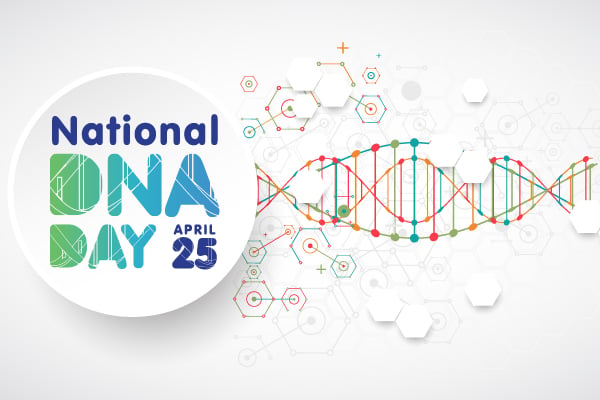It’s in Your DNA

Did you know we have a National DNA Day? On April 25, 1953 James Watson, Francis Crick, Maurice Wilkins, and Rosalind Franklin published their first papers describing their ground-breaking research on the structure of DNA. For educators, this commemoration is an excellent opportunity to introduce students to the fascinating STEM fields of DNA analysis and human genomics.
The Human Genome Project
Fifty years later, April 25 was again a landmark day in the field. April 25, 2003 marked the official completion of the Human Genome Project (HGP), the world's largest international biology project. The goal of this 13-year, $3 billion collaborative effort was to determine the sequence of the 3 billion nucleotide base pairs that make up human DNA, and identify the approximately 30,000 human genes!
Technology and resources generated by the HGP have significantly impacted research across the life sciences, including fields such as microbiology, evolution, forensics, and agriculture. 2003 also saw the dawn of a new field of medicine: medical genomics. Using the HGP’s roadmap to mankind’s most basic building-blocks, scientists can now develop new treatments, cures, or even preventative measures to combat thousands of human health issues.
The National Human Genome Research Institute (NHGRI)
The NHGRI sponsors National DNA Day on April 25 each year, to offer students, teachers and the public an opportunity to learn about and celebrate the latest advances in genomic research, and explore how those advances might impact their lives.
On the NHGRI website you can download the National DNA Day Starter Kit, which contains materials to plan a school event or classroom activity. Be sure to check out the site’s library of valuable educational resources, including:
- An interactive timeline of the human genome – highlighting research milestones, starting with Gregor Mendel in 1865, and continuing to the HGP in 2003
- An image database – providing students with illustrations of cells, chromosomes, genes, DNA, ACGT, etc.
- A downloadable PDF guide to your genome – a comprehensive, student-friendly explanation of genomes
DNA and Medicine
All diseases have a genetic component, sometimes due to heredity; other times due to environmental factors. With the knowledge gained from the HGP, scientists can pinpoint irregularities in genes that contribute to disease.
Today human genome analysis costs no more than many other sophisticated medical tests, so doctors can easily integrate DNA analysis as they diagnose complicated health issues. With a simple blood test, pregnant women can also check for genetic abnormalities in their fetus.
The most significant impact of genomics, however, may be in cancer medicine. According to a report from MIT, “doctors can now sequence a patient’s tumor to identify the best treatments.” Genomics has also improved a physician’s ability to more effectively prescribe medications for many other diseases.
Still, the research is far from complete. Scientists around the world agree that science has only uncovered the tip of the genome iceberg, and it will likely take several years to fully harness genomic potential for a healthier human race.
DNA and Forensics
Anyone who’s watched an episode of CSI knows how critical DNA evidence is in modern crime solving. Police departments in major cities now employ teams of scientists to unlock the secrets in clues left at crime scenes.
The criminal justice system embraced DNA analysis in the mid-1980’s, and revolutionized the field of forensic science. Crime labs can analyze microscopic traces of blood, saliva, skin cells, hair, etc. to link specific individuals to a crime scene. DNA analysis is so accurate that it can also exonerate people who have been wrongfully convicted.
Because forensics is “detective work,” it is often fascinating to young people. Engage your students with fun classroom activities such as the ones listed below, and see if you can inspire some future forensics experts!
- The “Who Did It?” lesson plan from Discovery Education
- High school forensics activities, from the American Chemical Society
- 5 Mysteries to Solve, from Education World
If you notice a special spark or knack in any of your students, consider nominating them for Envision’s Law and CSI summer program!
Take advantage of DNA Day by leading your students in a discussion on the impact that DNA analysis could have on their lives and their futures. Challenge them to use their imaginations to describe as-yet undeveloped scientific advances in the field. Do your students think scientists could one day use genome information to create a living android? Do they think parents could use genetics to determine the characteristics of their future children? If parents could do that, should they? These discussions are likely to be both educational and enlightening. Happy DNA Day!
